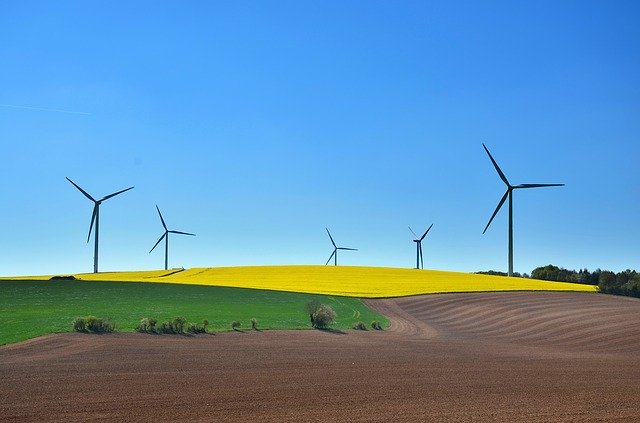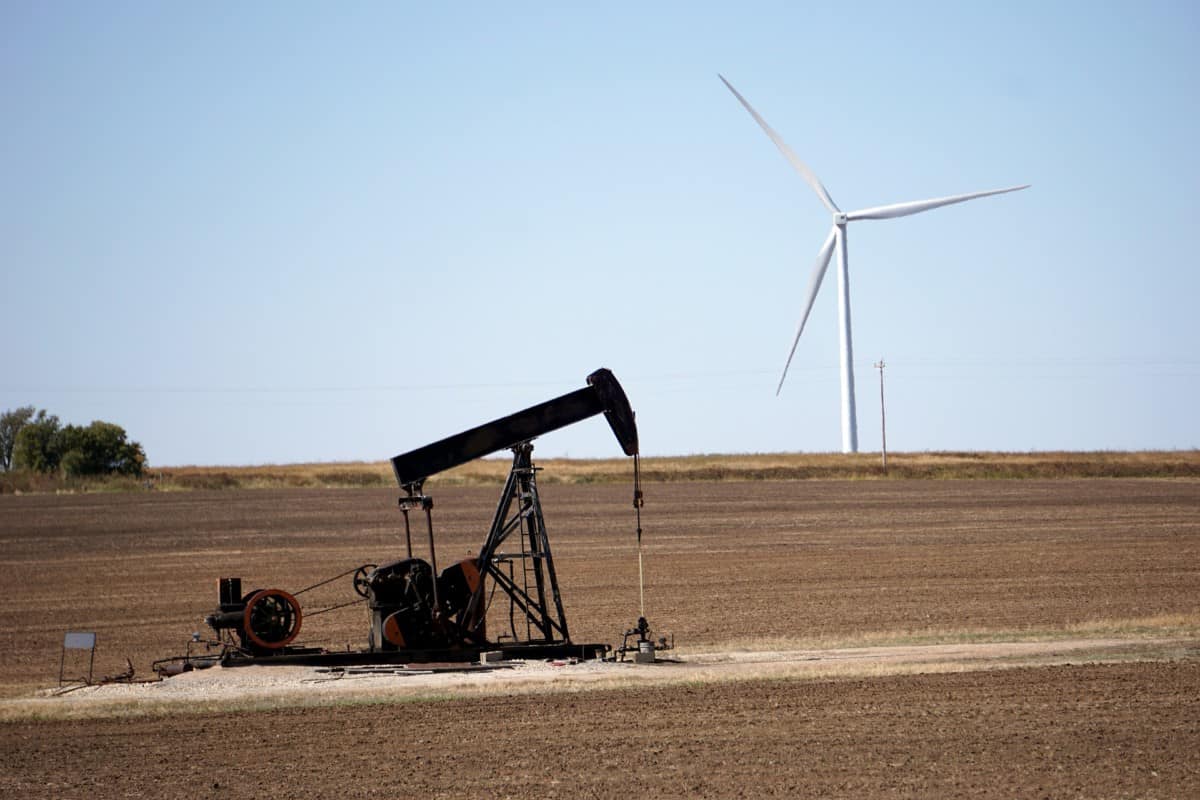We rely on energy in almost every aspect of our daily lives. Energy is required for transport systems, lighting, to power appliances or devices, and other equipment in different facilities.
But while for centuries we have relied on fossils, there are now calls that such sources need to be replaced with renewables. Both renewables and fossils have their own distinct features and here is a review of what sets them apart.
Renewable Energy vs Fossil Fuels
By now you have probably heard how corporations are moving towards using clean energy sources that promote sustenance of the planet.
On the other hand, research studies indicate that fossil fuel reserves are declining at a rapid rate and may soon be non-existent. In this article, we look at the difference between fossil fuels vs renewable energy in addition to insightful facts.
Sources
Fossil fuel vs renewable energy sources are quite different. Renewable, just like the name suggests, can’t get depleted. This is because it normally comes from natural resources that can easily get replenished in the lifetime of an average human. Renewable energy sources include the likes of:
- Solar and wind
- Biomass
- Hydro
- Geothermal
On the other hand, fossil fuels which sometimes take millions of years to replenish themselves, include sources such as:
- Oil
- Natural gas
- Coal
Note: Although these distinctions seem clear at a glance, there are still some gray areas. Generally, renewable energy sources are considered clean because they have very minimal chances of causing environmental pollution.
However, natural gas is often considered a source of clean energy. In fact, it’s cleaner than coal and, therefore, there are recommendations that it should be categorized as sustainable energy. But still, natural gas usually emits carbon IV oxide when it’s burned. So, it’s as good as a fossil fuel.
Fossil fuels are toxic and cause damage to the environment
Research indicates that the earth’s temperature has been increasing at an extremely high and alarming rate. The 20th century featured a massive industrial revolution that has immensely contributed to climate change. There are tsunamis, tornadoes, air pollution, and change in weather patterns globally.
These toxic side effects are not only harmful to plants and animals but also human beings. There are lots of respiratory diseases currently more than ever. Besides that, there are also untreated medical conditions such as cancer that are often attributed to toxic chemicals.
Renewable energy sources, on the other hand, are less harmful and that’s why they are considered clean. This is because they generally emit less CO2 compared to fossil fuels.
They normally create a comfortable and fresh environment that’s easier to breathe in and stay cooler. Besides that, it’s easier to sustain such sources over a long period of time even with the increasing demand.
Fossils Fuels are expensive compared to renewables
It’s estimated that American businesses, as well as consumers normally, use between $700 billion and $1 trillion annually on natural gas, oil, and coal. This is a significantly high amount minus the additional costs that consumers have to pay due to the side effects of fossil fuels’ pollution.
If the annual costs of renewables are estimated based on a 20-year recovery plan, then it would cost $118 million per year for solar energy. Wind and hydro would cost around $131 million and $21 million respectively. Besides that, a couple of hundred million would also be spent on storage. This is not even half as costly as fossils.
While setting up a renewable energy plant may be costly at the beginning, the overall cost, in the long run, is quite cheaper. Overall, the savings that come with relying on renewables will decrease your total energy spending.
More Energy Consumers are turning to Renewable Energy Sources
While fossil fuels run the industries, more businesses and home consumers are now turning to renewables. For instance, the use of natural gas in the US has dramatically increased. If you look at the market share of natural gas over the past decades, the numbers are quite high.
Although we have not peaked in terms of using fossils, the growth of renewables has been tremendous. Data on energy indicates that the use of natural energy has increased by almost 40% since 2005. While fossil fuels account for almost 80% of energy, its growth rate in recent times can’t be compared to that of renewables.
Fossil fuels vs renewable energy: Strength and Weaknesses
Strengths and Weaknesses of Fossil Fuels
On the positive side, fossil fuels are considered to be portable sources. You can conveniently carry them from one point to the next and even store them until you are ready to use them. By now, you have seen tankers, ships, and cargo trains transporting oil and coal fuel to different destinations.
The downside of such a source is the high rate of pollution due to chemical composition. The massive amounts of hydrocarbons released by such fuels lead to the production of greenhouse gases, a contributing factor to acid rain.
Besides that, the extraction process of fossil fuels normally leads to environmental hazards. And did you even know that fossil fuels are the main causes of political instabilities in many countries?
Strengths and Weaknesses of Renewable Energy Sources
They are reliable and natural. You can fully depend on the sun to rise every day. Alternatively, you can depend on biomass as your source of energy because it’s obvious that organic materials will eventually undergo decomposition.
It’s also possible to customize these sources to meet your personal needs. For instance, you can install solar panels of different sizes as per your daily energy requirements. Compared to fossil fuels, renewable energy is affordable.
Although there are so many positives that come with natural sources of energy, there are also some downsides. For example, harnessing windmills and solar panels to produce large amounts of energy usually involves high initial costs and they need extensive space. For you to collect a considerable amount of energy, you need to use large tracts of land.

Another notable downside is that such sources needed to be effectively harnessed because they easily get diluted or depleted across the environment. To sufficiently implement and use renewables, you need to set up clear conservation guidelines between the production point and the node of consumption. Lastly, they can also be affected by weather patterns.
Renewable energy vs fossil fuels: Interesting Facts
Even though there are clear differences between these two sources with renewable sources being the best alternative, here are a few interesting facts that you need to know:
For now, fossil fuels are reigning kings!
Yes, fossil fuel remains that most used source of energy for now. Research reports indicate that humans have not even reached the peak demand of fossil fuels even though there are finite resources. Data indicates that the coal reserves in the US could last for over 300 years while gas reserves in the same continent can last up to 90 years.
It will take decades to divest from the use of fossil fuels
The current global infrastructure has been primarily made based on fossil fuels. This has given such energy sources significant power. So, the divestment process will take decades to be successful because it’s a generally laborious process that’s slow.
Some fossil fuel sources can be renewable
There are plans in place to make some of the fossil fuel sources renewable. Governments and organizations are taking it upon themselves to maintain these sources by implementing various projects to ensure that the traditional utilities can remain in use for hundreds of years to come.
Mixing both sources of fuel is vital
Both renewable and fossil energy sources can be integrated to create a viable solution. At the moment, it’s clear that both energy sources are needed due to the market demand. Additionally, affordable sources such as renewable technologies can help to significantly cut down the overall energy costs and enhance flexibility in terms of reliability.
Fossil fuels are the most generated sources in the US
While the US does generate significant amounts of oil, other sources of fossil fuels are still dominant. At the moment, more natural energy is produced due to enhanced hydraulic fracking processes. Here is how the different energy sources dominate in terms of generation.
- Oil- 1%
- Renewables – 15%
- Nuclear energy – 20%
- Coal – 30%
- Natural gas – 34%
More information can be found here.
The Bottom Line
For centuries, humans have heavily relied on fossils as the primary source of energy. However, this is beginning to change due to climate change, pollution, conflicts, and the high cost of production.
A lot of organizations as well as other consumers are now considering using renewables. They are not only affordable in the long run but also safe for the environment.
The use of renewables is rapidly increasing. However, this doesn’t eliminate the fact that fossil energy is still the most used and it will take years to divest from it.
To ensure that we preserve the remaining fossil sources and protect the environment, it’s only right that we mix the use of both sources of energy.
This will make the slow divesting process possible, allowing different governments to come up with viable solutions.
Besides that, most renewable sources of energy not only require storage facilities but the initial setup cost is also extremely high. They require time, investment, and also a good storage plan to ensure that the energy produced doesn’t get lost across the environment.
Now read my comprehensive article How Does a Wind Turbine Generate Electricity
Recent Posts
The Future of Wind Energy The future of wind energy is set to play a critical role in addressing global energy needs while combating climate change. As renewable energy sources like wind and...
Misconceptions about Wind Energy This article Misconceptions about wind energy will debunk common myths surrounding wind energy and clarify the facts based on scientific research, studies, and...


